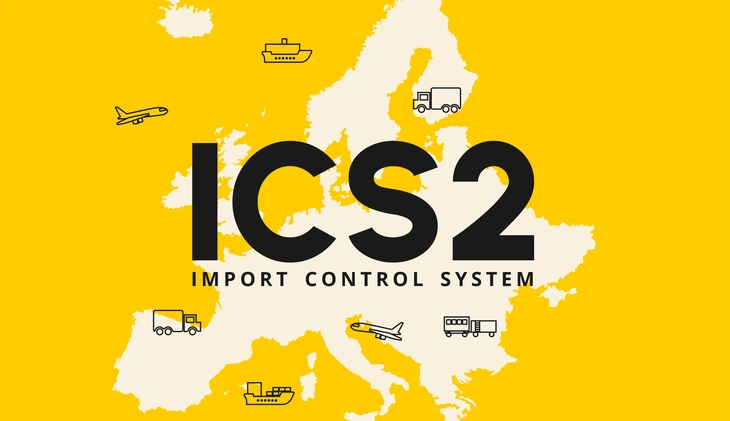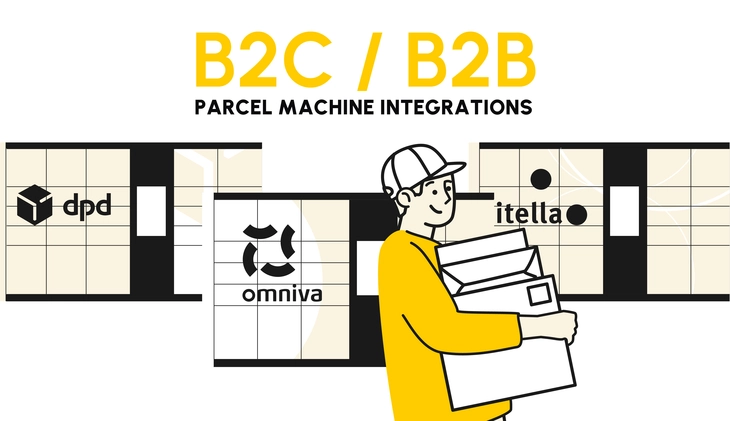For over 100 years, transit time and transport price have been the primary decision criteria in B2B logistics.
However, a new factor is gaining importance in the decision-making process:
The CO2 footprint of transportation choices.
However, a new factor is gaining importance in the decision-making process:
The CO2 footprint of transportation choices.
Shippers can compare and consider the CO2 footprint before making a transportation choice between different carriers and methods of transport.
United Nations climate agreement on the transport sector
According to the UN Framework Convention on Climate Change (UNFCCC), there is already a widespread agreement to reduce CO₂ emissions from transport by at least 50% at the latest by 2050. Carbon dioxide (CO2) is not a pollutant but a greenhouse gas which contributes mainly to global warming effects and is associated with climate change. Freight transport is one of the sectors where effective public and private interventions are being called for to reduce CO₂ emissions and where adaptation measures are needed to reduce the vulnerability to climate change. Currently, the transport sector accounts for about 30% of CO₂ emissions in developed countries, and about 23% of the total man-made CO2 emissions worldwide.
Make environmentally conscious transport decisions
Cargoson is one of the few software tools – if not the only one – where you can choose your carrier based on pre-calculated CO₂ emission estimation for every single shipment. In addition to the estimated delivery time and price, you can see the estimated environmental impact of your shipment and include this knowledge in your decision process. We in Cargoson believe that anyone making transport decisions should have the opportunity to make a more sustainable choice without any additional hassle. And if your client is also environmentally conscious then they are likely willing to understand and appreciate your sustainable transport decision as well.
How do we calculate it?
Our GHG calculations are mainly based on the UK government Greenhouse gas reporting conversion factors (https://www.gov.uk/government/publications/greenhouse-gas-reporting-conversion-factors-2021) and Global Logistics Emissions Council Framework (https://www.smartfreightcentre.org/en/how-to-implement-items/what-is-glec-framework/58/), the calculation principles of which are based on the EN16258 standard.
We are using different external routing and geocoding engines to calculate distances travelled. In addition, we have developed our own algorithms to calculate GHG emissions for different transport modes.
There are many great GHG emission calculation tools out there, but often the challenging part is to consider differences in handling procedures for different goods in different sizes. Our model considers not only the distance and mode of transport, but also the characteristics of the goods. Full truck loads are often delivered directly – no difficulties there. But small parcels are delivered via terminals and using much smaller vehicles. The challenging part is to predict the correct vehicle type. The actual truck in use can be determined if the carrier is only transporting goods using their own fleet. In many cases, external logistics partners are used, and in those cases the accuracy of estimations is key.
Roadfreight
Depending on the distance travelled and the characteristics of the goods, we predict which type of vehicle will likely be used. For example, for small parcels minivans are used whereas for groupage and part-load shipments rigid trucks are used. The type of the truck is also dependent on the transport distance. If the distance is short for small parcels only minivans are in use. If the distance is longer then collection and delivery is done with a minivan; for line-haul, much larger trucks are normally used.
Different types of trucks also have very different average load factors. Delivery round-trips are normally limited by the number of stops rather than vehicle capacity, whereas line-haul trucks are nearly fully loaded.
The type of the vehicle and load factor are some of the most important characteristics when calculating GHG emissions for roadfreight.
Additionally, we are taking into account the fleet composition of the particular logistics company: how many, which type and how old the vehicles are. It is nearly impossible to perfectly predict which exact trucks were in use or will be used for given shipment. But given that the economical reasons make logistics companies to utilize their fleet in the best possible way, we can calculate the personal average emission factor for each logistics company and use those in our GHG calculations model.
Sea freight
We have our own routing engine for sea freight. We have gathered information about all active sea routes into our database and we are using this information to route each shipment from its collection point to the nearest harbour, then via the sea routes to the closest destination harbour, and finally the last mile is routed using roads again.
Air freight
Based on the recommendations of the GLEC Framework, we use the great-circle distance (GCD) calculation for routing air freight shipments, plus a constant of 95 km according to EN16258 to account for maneuvering at the beginning and end of the flight.
Rail freight
Routing rail shipments is the most challenging of the major freight transportation types. In general, the railroad network is known but there are many restrictions. Some of the railways are for electric trains only, some of them can service both diesel and electric trains but there are certain limitations for freight trains. Another topic is the railway track gauge. Technically it is possible to change the undercarriage of the train, but in reality for freight trains this approach is normally avoided, which causes additional challenges for rail routing as the actual route is hard to predict. As to our knowledge, a routing engine that could route rail freight shipments with great accuracy across the world does not (yet) exist.
As a result, for the time being we are using great-circle distance calculations with the average detour factor of the rail network. This results in slightly less accurate results, but in the future we want to build or start using an external routing engine that can find the optimal route along the rail network.
Estimated GHG emissions in Cargoson
Cargoson calculates the estimated GHG emissions for all of your carriers and their freight services before the shipment is actually booked. This gives user the possibility to make environmentally considered decisions.
For this purpose, we have set up a way for each carrier to describe and maintain their fleet in Cargoson. Specifically, what type of vehicles they use, how many and how old the vehicles are. In general, the impact of the vehicle age in terms of the total greenhouse gas emissions is not very high, yet it gives a good insight about the carrier's vehicle fleet.
Do you need to quickly calculate CO2 emissions for a shipment?
TRY OUT OUR FREIGHT TRANSPORT CO2 EMISSIONS TEST-CALCULATOR:
CO2 EMISSIONS CALCULATOR
For this purpose, we have set up a way for each carrier to describe and maintain their fleet in Cargoson. Specifically, what type of vehicles they use, how many and how old the vehicles are. In general, the impact of the vehicle age in terms of the total greenhouse gas emissions is not very high, yet it gives a good insight about the carrier's vehicle fleet.
Do you need to quickly calculate CO2 emissions for a shipment?
TRY OUT OUR FREIGHT TRANSPORT CO2 EMISSIONS TEST-CALCULATOR:






